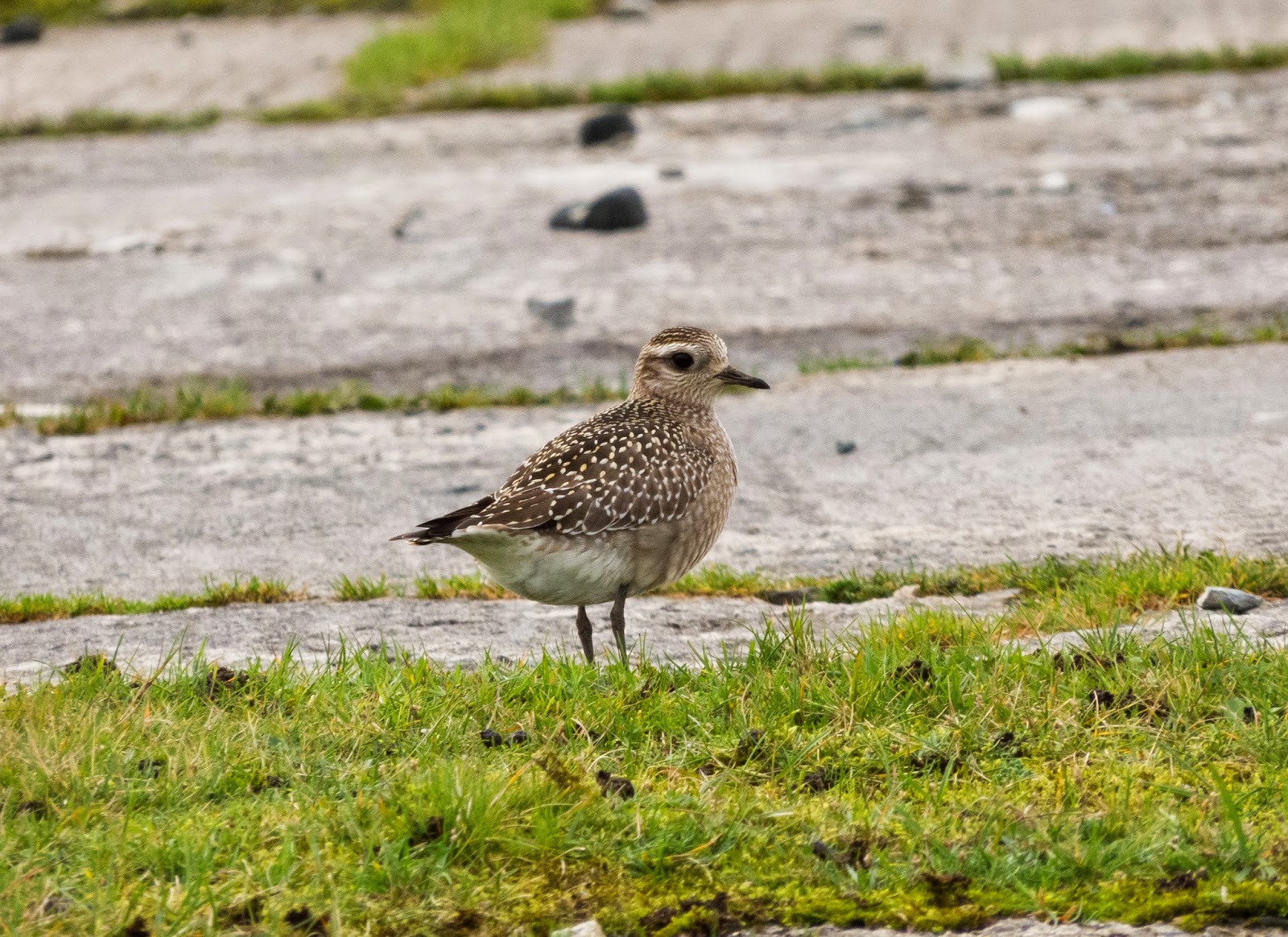It’s always
tricky when a mega turns up at the beginning of the week and the recent Blyth’s
Pipit in Yorkshire was no exception. Found on a Monday, it proved to be a tense
few days until the first opportunity arose on the Saturday. With the majority
of birds either in the far reaches of the remote Scottish Isles or down at the
extreme opposite end of the country in Scilly, it was a great chance to see
this rare pipit less than an hour and a half away (and on the mainland!)
Driving up to Pugney’s Country Park near Leeds, we arrived at the
flooded field in the nearby industrial estate just before 11am – with the bird
being seen throughout the day it was (thankfully) decided that a crack-of-dawn
start was not really necessary!
Luckily we had only been stationed watching the bird’s favoured field
for around 20 minutes before the word got around that it was out on the bank
directly opposite and giving good scope views. We quickly got on the bird, and
the difference between the accompanying Meadow Pipits was clear to see – the
pale unstreaked breast and slightly thicker bill were apparent – as was the
slightly larger size.
 |
| Bad quality scope shot but you can still note the pale breast and lack of streaking. |
The bird being out in the open was extremely lucky, as the overgrown
and tangled field made it virtually impossible to pick out the pipits hiding
within – once landing they were immediately lost to view in the vegetation.
There has also been quite a bit of controversy surrounding this particular
individual – with people taking issue over the organised “flushing” that had
been taking place every couple of hours before the weekend. On one hand, this
prevented the inevitable trampling through the grass throughout the day which
would undoubtedly have resulted in the bird being constantly disturbed and
quickly moving on, although on the other, Saturday proved that great views are
obtainable with a little luck and patience without the need for intentionally
flushing the birds (in which case only flight views would be obtainable –
something I personally wouldn’t be satisfied with).
Content with our views, although sadly not hearing the bird give its
diagnostic call, we headed back over to Pugney’s to check out the wildfowl and
gulls on the water. There was no sign of the recently reported drake Smew (high
up on my wish list of winter birds to see) but a couple of male Goldeneye and a
showy Kingfisher on the main lake were good compensations.
After not being able to connect with the recent Gresford Flash Caspian
Gull the previous week, and having my 1w individual unceremoniously stripped
from my list by someone who can’t even properly ID a Bean Goose (no names
mentioned), me and Alex were keen to catch up with one of the birds that have
regularly been roosting on the main lake.
With 3pm approaching, we joined the birders already stationed and
began scanning the large gulls present on the lake. However, it soon became
apparent that this wasn’t going to be an easy task – with the local boaters
intent on ploughing their yachts straight at the flock – causing them to flush
and scatter each time.
As it got steadily colder, darker and wetter, all there was to show
was a 1w Yellow-legged Gull, displaying the classic checkerboard pattern and
large, dark, smudged eye – offering a nice comparison with the nearby Herring
Gulls.
After a false alarm with what was decided to be just a very pale
headed Herring Gull (the structure just didn’t seem right for a Casp) of the
experienced and very knowledgeable locals (co-incidentally the Blyth’s finder)
locked on to a cracking 2w Caspian Gull. I uttered a silent cheer and took in
the birds notable features – the very dark small eye and slender, parallel
sided bill and the heavy presence of grey in the mantle – something you
wouldn’t expect to see in a Herring Gull. The clean unstreaked head and breast
were also clearly apparent - one of the main features along with the long,
extreme black on the primary tips. It was also noticeable that the bird had a
certain “banana-like” shape in the water when compared with the accompanying
Herring Gulls, something to look out for in the future.
 |
| Record shot through the scope of the Caspian Gull as the light was fading |
Normally hating gulls and having difficulty with Caspian Gulls in
particular, it was a very educational bird and proved to be the only one of the
night – a great start to get my eye in for finding and successfully identifying
my own Caspian Gulls in the future.
Ecstatic and after several years of searching (in Alex’s case),
countless trips to freezing winter gull roosts and various false alarms,
hybrids and dips, Mission Casp could finally be called a success!

















































